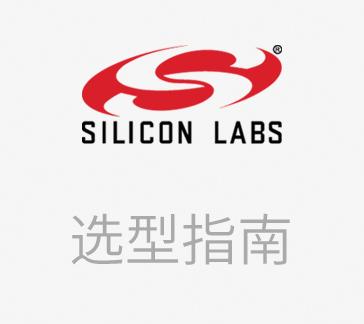Wi-Fi Trends & How Wi-Fi 6 Can Improve the IoT



Ask almost anyone about what they think the most important technology that they use every day is and they’re likely to say Wi-Fi, especially in our pandemic-influenced world. In fact, a recent worldwide study by Lenovo found that having, good reliable Wi-Fi is the most essential capability people said they need to enable a successful work from anywhere experience. Similarly, at home, if the Wi-Fi goes down, even the most fervent PC and smart home device aficionados quickly forget about their gadgets and often simply stop using them until their connections come back on. To put it simply, Wi-Fi is the lifeblood of the digital era.
Given its importance, it’s not surprising to see the rapid evolution and advancements that have been made to the Wi-Fi standard over the last few years. The most recent ones are Wi-Fi 6 and Wi-Fi 6E, which offers a tremendous 1.2 GHz of new bandwidth available for Wi-Fi use thanks to the addition of the 6 GHz band. Among many new enhancements incorporated into Wi-Fi 6 are support for downlink and uplink MU-MIMO (Multi-User, Multiple Input, Multiple Output) and OFDMA (Orthogonal Frequency Division Multiplexing Access). The enhanced versions of MU-MIMO in Wi-Fi increase the number of signals that can be sent and received simultaneously on a Wi-Fi network as well as the range of those signals. OFDMA support in Wi-Fi 6 improves the efficiency of how the signals are sent. Together, these two technologies—along with many others—make Wi-Fi 6-capable networks faster, more reliable, and able to support larger number of devices, even on existing 2.4 and 5 GHz channels.
Most of the focus on Wi-Fi 6 has been on the speed improvements enabled by the new standard because, after all, who doesn’t want a faster network? For smart home and other Internet of Things (IoT) devices that don’t have challenging bandwidth demands, however, those speed differences really don’t matter because speeding up the data transmission rates doesn’t make the connected devices run any better.
Does that mean Wi-Fi 6 isn’t useful for IoT-type applications? Absolutely not. The key benefits, however, have to do with the spectral efficiency, increased number of simultaneous supported devices, and improved reliability and range that Wi-Fi 6 offers rather than speed. In addition, Wi-Fi 6 adds support for a technology called TWT (Target Wake Time), which allows devices that support it to fall into an ultra-low-power sleep-like mode that can improve energy efficiency.
Speaking of which, most IoT devices tend to operate in the 2.4 GHz Wi-Fi range, in large part because transmitting and receiving signals on these lower frequencies requires less power than transmitting on higher frequencies like 5 or 6 GHz. Energy efficiency is absolutely essential for many IoT devices—especially those powered by batteries—and the ability to use less power can make a significant difference in the useful lifetime of an IoT device. In fact, in the case of a smart lock, the difference between running at 55 microamps vs. 250 microamps translates into 3 years of life on a single battery versus less than a year.
Not all Wi-Fi chips can function at these lower power modes, however. Most Wi-Fi chips operate at higher power levels because they’re optimized for the high-bandwidth requirements of devices like PCs, smartphones, smart TVs and more. SILICON LABS, however, has been creating low power Wi-Fi chips like the RS9116 that are specifically designed for the unique requirements of IoT devices. Not only can the RS9116 function at the lower power levels mentioned above, it incorporates capabilities that allow easier setup for IoT devices that offer little to no user interface because of their smaller size or specific design requirements. For device makers and designers, that’s a critical distinction to consider.
Another critical factor is simultaneous operation of Wi-Fi with other wireless standards and industry protocols, such as Bluetooth, Bluetooth LE, and others. As great as Wi-Fi is, it’s clearly not the only wireless solution in home, enterprise or industrial IoT environments. Practically speaking, it’s essential to be able to peacefully co-exist with multiple types of wireless signals. Importantly, this co-existence extends beyond just the physical layer and demands software stacks that have been designed and optimized to run simultaneously as well. To this end, Silicon Labs already has a wide range of Wi-Fi 4-capable chips that work alongside Bluetooth and other protocols. In addition, the company has a number of Wi-Fi 6-capable components with similar capabilities coming soon. Not only does this make the logical design process easier but integrating the Wi-Fi and Bluetooth capabilities into a single chip reduces the physical size requirements necessary to fit the part into device designs.
In addition to support for multiple physical standards, because Silicon Labs is heavily involved with development of the new Matter protocol, it’s working to offer interoperability with Matter as well. Matter sits at the application layer of the networking stack, so incorporating the ability to connect with other Matter-compatible devices in the hardware and software layers of Wi-Fi solutions requires extra effort if the integration effort isn’t done in advance.
Wi-Fi is clearly an integral technology for the wide range of smart devices we all use in our personal and professional lives today and its continued evolution is going to be a critical factor in device design and user experiences for a long time to come. As the standard adapts and evolves to new more demanding requirements, it’s important to remember that not all Wi-Fi solutions can fit all applications. For IoT device designers, Wi-Fi chips specifically targeted to their needs are going to be the option they need to consider as they think through their available choices.
- |
- +1 赞 0
- 收藏
- 评论 0
本文由翊翊所思转载自Silicon Labs,原文标题为:Wi-Fi Trends & How Wi-Fi 6 Can Improve the IoT,本站所有转载文章系出于传递更多信息之目的,且明确注明来源,不希望被转载的媒体或个人可与我们联系,我们将立即进行删除处理。
相关推荐
【经验】如何将Silicon Labs WiFi模块RS9116N驱动移植到嵌入式linux平台
RS9116N的WiFi协议栈则是在主控上运行,需要主控运行linux系统以及对应的RS9116N驱动。本文以树莓派为例,介绍如何将Silicon Labs WiFi模块RS9116N驱动移植到嵌入式linux平台。
设计经验 发布时间 : 2021-11-09
【经验】WIFI SOC Rs9116进入低功耗模式命令操作流程
Redpine Signals Rs9116是低功耗WIFI SOC,可以应用于智能锁、智能手表等电池供电产品。用户会对Rs9116的功耗比较关注,本文以Rs9116W-SB00-AA1模组为例,使用串口通信, PC端作为HOST发送at指令,指导如何让模组进入DTIM10模式,测试平均电流。
设计经验 发布时间 : 2020-06-16
【经验】超低功耗SoC RS9116的原理图和PCB封装文件如何使用?
本文介绍Silicon Labs 超低功耗SoC RS9116的原理图和PCB封装文件如何使用。
设计经验 发布时间 : 2021-09-24
安信可科技(Ai-Thinker)物联网专用模组&天线选型指南
目录- LoRa product Radar product WiFi+Bluetooth products 2.4G Series Module GPS Series Module UWB & 4G series module GPRS series module Offline Voice Module Series Antenna
型号- RA-01SH,PB-02-KIT,RTL8720 SERIES,AI-WB1,AI-WB2,AI-WB2-M1,HI-07S-KIT,TB-02-KIT,AI-WB2-12F-KIT,AI-WB2-13-KIT,AI-WB2-13U,AI-WB2-01S,A9,SX1268,RA-01SC,TG-02-KIT,PB SERIES,RTL8710BX SERIES,GPS SERIES,AI-WB2-01M,VC-01-KIT,HI-12F,TB SERIES,HI-12F-KIT,BW16,AI-WB2 SERIES,BW15,BW14,TG-12F-KIT,BW12,RTL8710BX,A9G,HI SERIES,AI-WB2-12S,PB-03,SX126X,AI-WB1-32S,HI-07S,HI-07SL-KIT,PB-01,PB-02,RG-02,AI-WB1-32S-KIT,RTL8720DN,AI-WB2-12F,TG-01M,AI-WB1SERIES,NF-05,NF-02-PA,NF-04,NF-03,BW16-KIT,NF-01-S,SX127X,TB-03F-KIT,LLCC68,TG-02,AI-WB2-07S,NF-01-N,NF-02-PE,AI-WB1-32S-CAM,GP-02-KIT,AI-WB2-M1-I,TG-02M-KIT,TG-02M,RA-08-KIT,GP-01,GP-02,CA-01-KITC,CA-01,2.4G SERIES,AI-WB2-13,PB-03F,PB-03M,TG SERIES,TB-04-KIT,TB-05,GPRS SERIES,TB-04,TG-02F,TB-02,RTL8720DN SERIES,TG-02F-KIT,4G SERIES,PB-03M-KIT,AI-WB2-32S-KIT,BU01,RA-01,PB-03-KIT,ESP32-G,RTL8720,RA-08H,NF-04-MI,VC-02-KIT,NF-05-S,RA-01S,HI-12FL,RA-01H,HI-07SL,AI-WB2-32S,RA-01SCH,PB-01-KIT,RTL8720CF,TG-01M-KIT,TG-12F,AI-WB1-A1S,AI-WB1-12F,TB-03F,BW15-KIT,GPRS,UWB SERIES,GP-01-KIT,AI-WB1-12F-KIT,NODEMCU-BU01,RA-08H-KIT,RD-01,RA-02,RTL8720CF SERIES,RA-08,VC-02,VC-01,HI-12FL-KIT,PB-03F-KIT
Silicon Labs(芯科科技) Wi-Fi 芯片和模块选型指南
目录- Wi-Fi SoC and Module Selector Guide Wi-Fi Lineup Wi-Fi Development Kits IoT Wi-Fi Technology Leader Wi-Fi Applications Company Profile
型号- SLEXP8022A,SIWX915,RS9116,WF200,SIWX917,RS9116X-DB-EVK1,RS9116X-SB-EVK1,RS9116X-SB-EVK2
【产品】Silicon Labs低功耗Wi-Fi+蓝牙SoC激活物联网新应用
Silicon Labs的RS9116 QMS Wi-Fi SoC提供全面的多协议无线连接解决方案,包括支持802.11 b/g/n (2.4GHz) 和双模蓝牙5无线协议。该SoC除了集成低功耗Wi-Fi + 蓝牙功能以外,还具有功率优化性能,可提供高数据吞吐量和扩展的范围。
新产品 发布时间 : 2021-12-03
Zhangjiang Innovation, Connecting the World of Chips: Zhangjiang Science City Pavilion Debuts at 2024 MWC Shanghai, Pioneering the Future Era
On June 26, 2024, the Mobile World Congress Shanghai Exhibition (hereinafter referred to as “2024 MWC Shanghai“) officially kicked off at the Shanghai New International Expo Center, N5 Hall, Booth B40.
原厂动态 发布时间 : 2024-08-31
RS9116 n-Link™ and WiSeConnect™ Wi-Fi® and Dual-mode Bluetooth® 5 Wireless Connectivity CC0 Module Solutions Overview
型号- RS9116N-DB00-CC0-B00,RS9116W-DB00-CC0-X24,RS9116,RS9116W-DB00-CC0-B2A,RS9116X-DB-EVK1,RS9116N-DB00-CC0-X00,RS9116W-DB00-CC0-B24
【产品】RS9116系列单波段模块RS9116N-SB00-AA0/AA1/B00
Redpine Signals公司(Silicon Labs旗下厂牌)的RS9116系列模块提供了全面的多协议无线连接解决方案,包括802.11 b / g / n(2.4GHz),802.11j,双模蓝牙5。该系列模块有三款单波段模块:RS9116N-SB00-AA0,RS9116N-SB00-AA1,RS9116N-SB00-B00。
新产品 发布时间 : 2020-07-25
SILICON LABS(芯科科技) Matter SoC和模块 选型指南
描述- Silicon Labs is the leading provider of silicon, software, and solutions for a smarter, more connected world. Our industry-leading wireless solutions feature a high level of functional integration.
型号- MR21,RS9116X,RS9116W,SLEXP8022C,EFR32XG24,SLEXP8023C,RS9116,ZG23,WF200,WF200 SERIES,SIWX915,MG24,WFM200S,SIWX917,MG21
ROHM(罗姆)LAPIS 无线通信LSI/模块选型指南 (英文)
目录- Wireless Communication LSIs/Modules Product Introduction Bluetooth® Modules Specified Low Power Wireless LSIs LPWAN (Low Power Wide Area Network) Wireless LSI Specified Low Power Wireless System LSI with Built-in MCU Wi-SUN Modules 13.56MHz Wireless Charger Chip set Wi-Fi Modules EnOcean® Modules Specifications
型号- ML7436N,ML7416N,ML7344CY,EDK 400J,STM 429J,ML7386X,MK74Q0410,BP35C1-J11-T01,BU1805AGU,MK71511A,STM 300,BP35C0-JXX,TCM 310,MK71521-NNN,BP35C5,TCM 410J,ML7416S,ML7396E,ML7396D,ML7396B,BP35C5-T01,ML7631,BP359B-T01,BP3591-T02,ML7630,BP3591-T03,USB 400J,BP3580,PTM 210J,STM 431J,ML7344XT,BP359F,MK71511A-NNN,MK71511,BP359D,BP359C,BP359B,ML7345D,ML7345C,ECO 200,BP3595-T02,BP3595-T03,BP3599,BP35C0-J11-T01,ML7345,MK715X1EK1A,BP3595,ML7386,MK71521A,BP3591,STM 431T,HSM 100,ML7406T,BP35C2-J11-T01,BP35A1,BP3622-T01,USB 500T,BP35C2,BP3621-T01,BP35C0,BP35C0-T01,MK71521,ML7386B,STM 400J,ML7344XY,MK71521A-NNN,PTM 330,ML7404,MK715X1EK1,STM 329,ML7396X,PTM 210,ML7414,USB 300,ML7345X,MK71511-NNN,STM 331,ML7406Y,PTM 430J,BP35C0-J11,BP35A7A,ML7344JY
UG453: RS9116X EVK HW User's Guide
型号- RS9116X,RS9116W,RS9116,RS9116X-DB-EVK1,RS9116X-SB-EVK1,RS9116X-SB-EVK2
Silicon Labs的新Matter开发平台简化了物联网生态系统
在 Silicon Labs,从一开始我们就对 Matter 的成功和创新进行了大量的投资。作为连接标准联盟 (CSA) 的活跃成员,我们是该平台最大的代码贡献者之一,也是所有半导体厂商中最大的代码贡献者之一。为加快采用速度,我们为 Matter 提供一套硬件和软件解决方案,可为所有生态系统和无线协议提供完整的端到端 Matter 开发平台。
产品 发布时间 : 2024-03-22
电子商城
品牌:SILICON LABS
品类:Wireless Connectivity CC0 Module
价格:¥74.2362
现货: 5,021
品牌:SILICON LABS
品类:Wireless Gecko SoC
价格:¥8.1764
现货: 104,128
品牌:SILICON LABS
品类:Mighty Gecko Multi-Protocol Wireless SoC
价格:¥27.0929
现货: 90,767
品牌:SILICON LABS
品类:Wireless Gecko SoC
价格:¥10.4994
现货: 61,779
现货市场
品牌:SILICON LABS
品类:Switch Hall Effect Magnetic Position Sensor
价格:¥2.2924
现货:126,000
服务
Ignion可支持多协议、宽频段的物联网天线方案设计,协议:Wi-Fi、Bluetooth、UWB、Lora、Zigbee、2G、3G、4G、5G、CBRS、GNSS、GSM、LTE-M、NB-IoT等,频段范围:400MHz~10600MHz。
最小起订量: 2500 提交需求>
可定制5G/4G/WiFi MIMO板状天线的连接头和电缆,频率范围:600~8000MHz,支持5G、4G、3G、GSM 以及双频WiFi 频段。
最小起订量: 50 提交需求>



































































































































































































登录 | 立即注册
提交评论